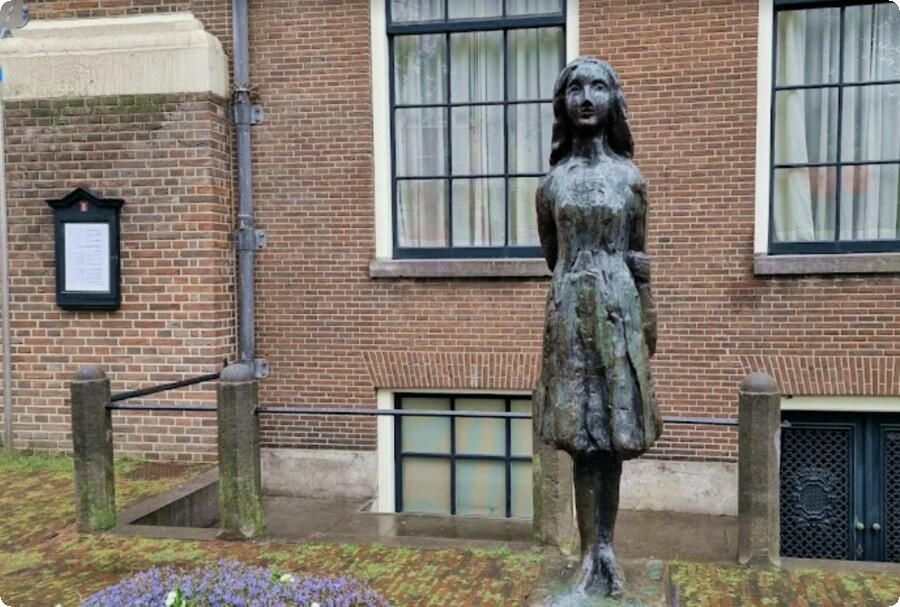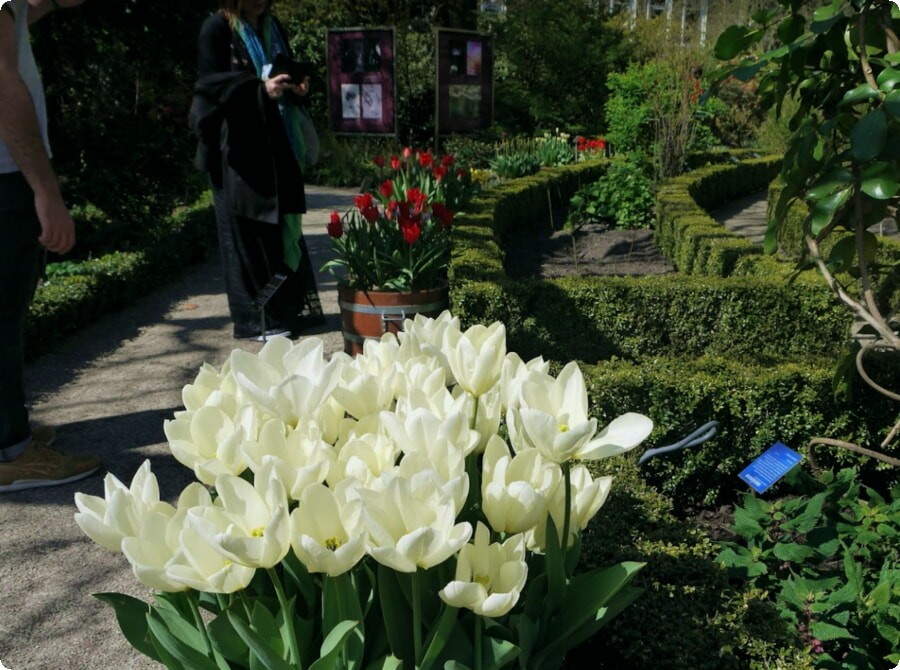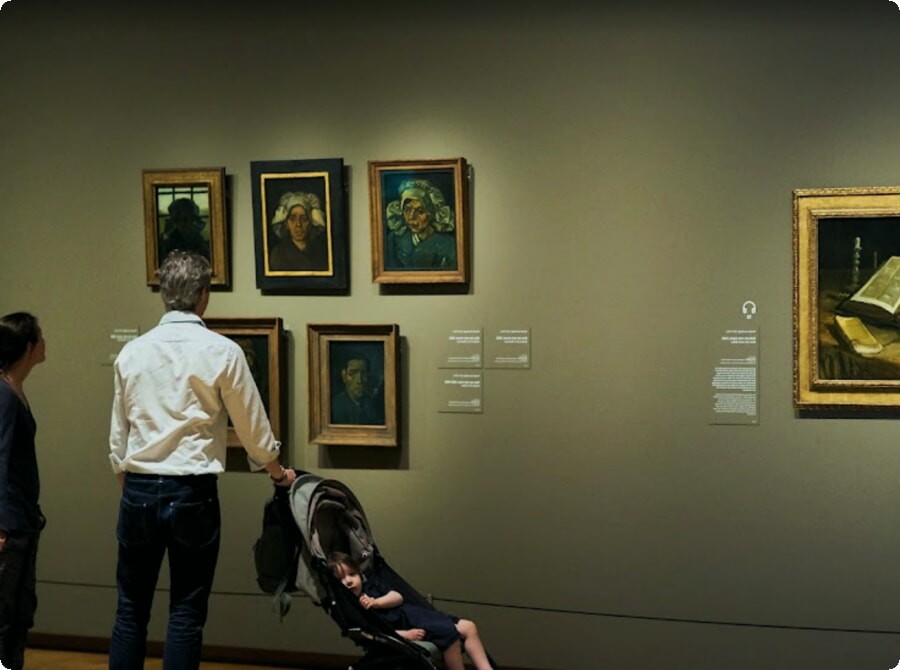The Best Sights of Amsterdam
Amsterdam is a popular tourist destination with lots of things to do and see. But if you’re visiting for the first time, it can be difficult to know which sights are must-sees and which are just nice to see!
To help you make the most of your time, we’ve put together this list of the best sights to visit in Amsterdam. It includes some of the most iconic attractions in the city, as well as some lesser-known gems.
For those who like to travel around the Netherlands by car, there is an opportunity to get a rental car in all popular locations: at the main railway stations, in the city center, at the nearest airports. Tariffs may vary depending on various factors: the duration of the rental, the class of the car, the place where the car was received. For example, in Amsterdam you can rent a compact class car from 18 euros per day, and in Rotterdam from 17 euros per day.
1. Anne Frank House
The Anne Frank House is one of the most popular tourist attractions in Amsterdam. This museum is located on the Prinsengracht canal and is dedicated to the eponymous diarist, who spent her last 2 years of life hiding from the Nazis in a secret annex within the building.
In July 1942, Anne and her family went into hiding in the secret annex of her father Otto Frank’s business premises at Prinsengracht 263. Over the course of two years, they were able to keep their lives intact by huddling in their rooms and eating food that was delivered to them.
Now, the Anne Frank House is a true-to-life historical center committed to the diarist, with her diary and original items on display. Visitors can explore her story through photos, memorabilia and film footage.
The Anne Frank House is a must-see on any trip to Amsterdam, especially for people interested in the Holocaust. It is a moving experience, filled with quotes from the eponymous diary and original artifacts.
Aside from its historic significance, the Anne Frank House is also a fascinating cultural attraction that reflects the oppression suffered by the Jewish community during World War II. It is the third most visited museum in Amsterdam and saw 1.3 million visitors in pre-pandemic year 2019.
In addition to visiting the Anne Frank House, you can also book an Amsterdam walk-tour that focuses on Anne’s story. This walking tour is led by an expert guide who will explain the history of the city and the Jewish Quarter during WWII, while sharing anecdotes about the young girl’s time in hiding. It’s a great way to see the city in a new light.

2. Hortus Botanicus
One of the oldest botanical gardens in the world, Hortus Botanicus has been growing plants and flowers for over 400 years. It is a peaceful oasis from the bustling streets of Amsterdam, and a great place to visit on a rainy day.
The garden was founded in 1638 as a garden for medicinal herbs, but over time it has expanded to encompass many more exotic plants. Visitors can view a snippendaal (herb) garden, a semicircular (systematic) garden and a large pond.
Hortus Botanicus is also known for its beautiful greenhouses that replicate the warm damp climate of tropics and subtropics. The Palm House and Butterfly Greenhouse are particularly charming.
For a quiet day out, you can stroll through the outdoor gardens or enjoy a drink and snacks in the lovely Orangery. You can also take a guided tour to learn more about the plant collections and their history.
You can find the Hortus Botanicus on land between the Nieuwe Herengracht and Nieuwe Keizergracht canals, a 25-minute walk from Amsterdam’s Centraal Station. Visiting the garden can be an excellent way to relax, especially on weekdays when it’s less busy than Dam Square.
As the oldest of all the botanical gardens in the Netherlands, it is also a popular attraction for visitors from abroad. The greenhouses contain a diverse collection of plants and trees from around the world.
As well as being an impressive garden, the Hortus Botanicus is also an important research facility. It serves as a global seed bank, helping to preserve rare varieties of plants that may be at risk of extinction. In addition to preserving the biodiversity of the planet, it plays an important role in the education of students at universities across the globe.


3. Van Gogh Museum
A trip to Amsterdam isn't complete without a visit to the Van Gogh Museum, which houses one of the world's largest collections of paintings by this Dutch master. From famous masterpieces like The Potato Eaters and Sunflowers to lesser-known pieces, it's worth spending a day exploring the museum's stunning collection.
The museum features 200 works by Van Gogh, as well as 500 drawings and 700 letters from his life, which provide an intimate view into the artist's mind. Visitors can also explore paintings by the master's contemporaries, including Gauguin, Monet and Toulouse-Lautrec.
In addition to the main exhibition area, there are a number of galleries dedicated to different aspects of Van Gogh's art. This allows the story of his artistic development to be told, with the emphasis on a variety of themes.
Architect Gerrit Rietveld, a member of the progressive art movement De Stijl, designed the museum's main building. The more recent temporary exhibitions wing was designed by Japanese architect Kisho Kurokawa, who opted for an open design that emphasizes geometrical forms and allows plenty of natural light into the galleries.
Another feature of the Van Gogh Museum is the new entrance building, which opened in September 2015. This is the biggest glass structure in the Netherlands and is positioned between the original museum building and the temporary exhibitions wing, providing better access to and between them.
Van Gogh's paintings are displayed chronologically throughout the museum, from his earliest work from the Dutch countryside and Antwerp in 1883 to his later, giddy French works such as Sunflowers and Starry Night. The museum is also home to several archival documents and personal effects, including Van Gogh's letters to his brother Theo.

4. Museum of Our Lord in the Attic
In the middle of Amsterdam’s Red Light District, just off the main street of Oudezijds Voorburgwal, lies a tiny gem of a museum. Ons’ Lieve Heer op Solder is more commonly known as Our Lord in the Attic, and it’s a hidden treasure worth stealing a glimpse of.
The museum is located on the upper floors of a canal house, and it is home to a 17th-century chapel that is remarkably preserved. Its architecture, gilded altar, and renaissance paintings make it a true wonder of Dutch history.
This is the second oldest museum in Amsterdam after the Rijksmuseum. It is also the most visited museum in the city.
It is a typical seventeenth-century canal house, with a secret church in the attic that was used regularly until 1887 when it was converted to a museum. Today, it receives over 80,000 visitors each year.
During the seventeenth century, Catholicism was persecuted in Holland and a number of clandestine chapels were built. These ‘schuilkerks’ were built in private homes and could be accessed only through a secret door or by climbing a narrow staircase.
While some of these churches were not destroyed, others were converted into secret Protestant chapels, and a few were even bombed. This was because Protestants believed that Catholicism was a heresy and therefore banned their worship in public.
Our Lord in the Attic is one of only two remaining surviving clandestine churches that are still open to the public, and it is a fascinating example of how religious traditions survive when reinterpreted as a staged historic site museum in the twenty-first century. In addition to its stunningly authentic religious artifacts, the museum is also a fantastic example of how the power of heritage can be harnessed in order to provide a meaningful experience for visitors.
5. The Beguines
Originally built in the 14th century as a cloister for nuns, The Beguines is now a peaceful oasis tucked away from the hustle and bustle of Amsterdam's centre. Enclosed by the Kalverstraat, Spui and Nieuwezijds Voorburgwal, this tranquil courtyard of old city houses is one of the most famous in Amsterdam.
Its two entrances are on the Spui and on the Gedempte Begijnensloot, which runs through the cloister (the last gate house is from around 1725). The former doorway has a gable stone depicting Saint Ursula, patron saint of Amsterdam beguines.
The Beguines were a Catholic order of unmarried or widowed women who cared for the elderly. They lived a religious life without taking monastic vows.
Their cloister was an important Catholic center before the Calvinist rebellion and alteration in 1578. The community survived the reformation as one of only a few Catholic institutions. The last Beguine died in 1971 at the age of 84.
Inside is a charming "clandestine" chapel, which the beguines used to worship in secret after their Gothic church was taken away by the Calvinists. It contains marble columns, wooden pews and paintings and stained glass windows commemorating the 'Miracle of Amsterdam'.
It's a secluded spot where you can escape the city's hustle and bustle, but it's also quite popular with tourists. The Beguines lived here for centuries, and it's a great way to see the architecture of a bygone era.
The Beguines were pious Catholics, who dressed like nuns and lived in small urban communes. They had a monopoly on the almshouses, and this courtyard was created to provide them with a place to live independently of their husbands and children. Today, the 47 surviving houses offer sheltered accommodation for older single women.